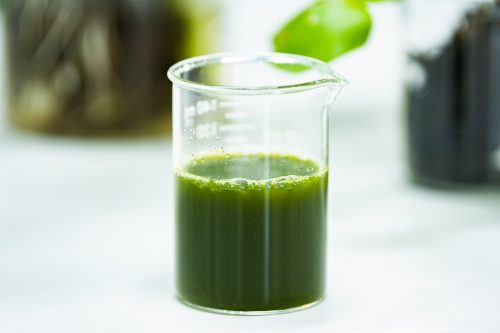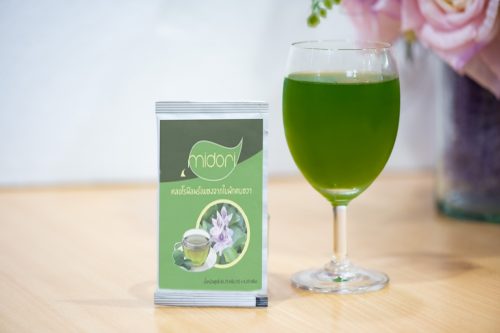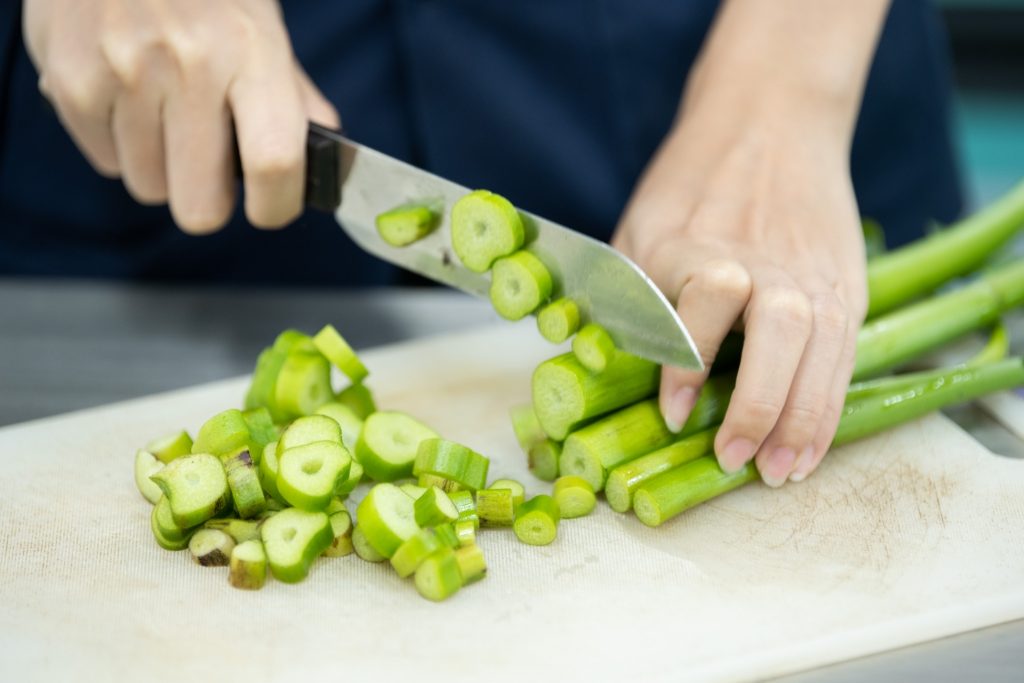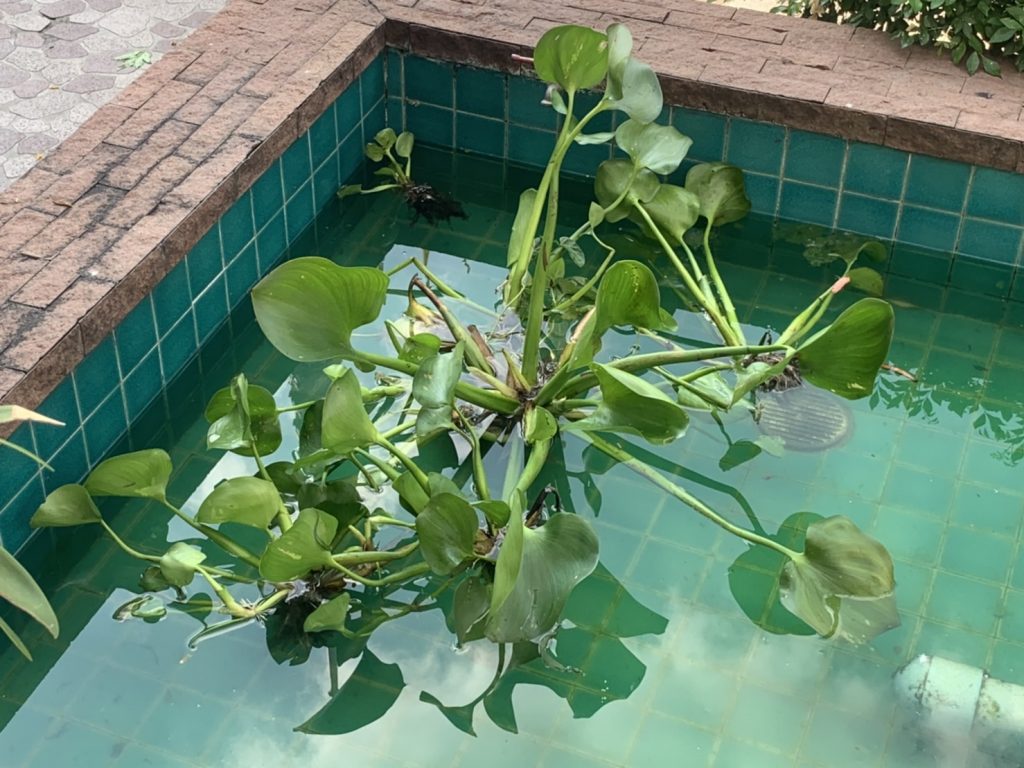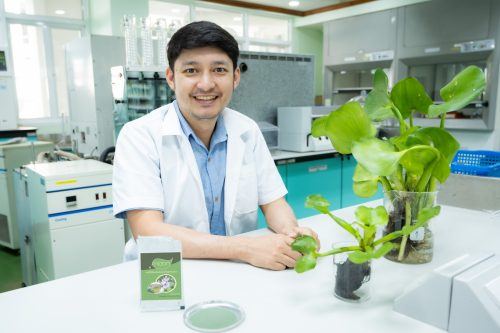
The water hyacinth is an aquatic plant that pollutes rivers. Both produce unclean water, obstruct water flow, and make the water source shallow. Water hyacinth is an aquatic plant with a single leaf. The inside is porous, like a sponge. The trunk is green all the way through, comparable to a water hyacinth. It is a pigment with chlorophyll as one of its ingredients. As a result, Asst. Rajamangala University of Technology Phra Nakhon devised a plan to bring the benefits of water hyacinth to manufacture ready-to-brew chlorophyll extract as an option for health-conscious customers, and to make use of water hyacinth by increasing the value of a variety of ineffective weeds.
According to the study team’s spokesperson, Asst. Prof. Thanapob Sorayom, chlorophyll is now available on the market in both liquid and powder form. and is well-liked by clients. Because the human body may use chlorophyll as a precursor to create blood cells when necessary. Especially if there is a problem with red blood cell synthesis, despite the fact that chlorophyll extracts are available on the market, due to vitamin deficiencies such as anemia. Customers may be uninformed of the plant from which a product is derived. This makes research on chlorophyll extract ready to brew from water hyacinth less trustworthy at times. The chemical characteristics of extracted chlorophyll were investigated using an ethyl alcohol-based solvent.
The extraction of ready-to-brew chlorophyll extract from water hyacinth begins with the separation of water hyacinth leaves from the stalks. And they must be cleansed with clean water. Cut into tiny pieces and thoroughly ground. The leaves were then steeped in ethyl alcohol in a water hyacinth:ethyl alcohol ratio of 1:1 for 7 hours before being filtered to remove the residue. and then place the piece in the vacuum evaporator. The concentrated liquid extract was filtered via filter paper before being put on a pan and cooked in a hot air oven. The mixture was then processed into a fine powder. The powder is then dissolved in water, heated to a boil, and condensed by combining with white sugar. Maltodextrin is added when it begins to crystallize. to avoid clumping, and then crushed into powder and packaged in an aluminum foil bag.
According to Asst. Prof. Thanapob Sorayom, the experiment revealed that the best time to use ethyl alcohol as an extraction solvent was 5 hours. The concentration of red-green chlorophyll (a) is 0.560.54, while the amount of yellow-blue chlorophyll (b) is 0.820.64. In the investigation of sensory quality impacting drying temperature at three levels, namely 50, 60, and 70 degrees Celsius, the temperature at 60 degrees Celsius was determined to be the most approved by the panelists in all areas. Physical characteristics such as brightness from 0-100, black-green value (L*) =74.402.80, red value (a*) = -1.030.32 and yellow value (b*) = 23.911.01 were examined. aw = 0.420.05 demonstrates the energy level of water (Water Activity) and moisture = 3.99±0.42 and no chemical residues that are detrimental to consumers. In terms of the amount of sugar added to the ready-to-brew chlorophyll extract, it was discovered that the recipe comprising sugar to chlorophyll-extract water was the most effective. The panelists ranked their personal tastes. with the most sugar content (20%). “I believe that in the future, researchers will use ready-to-brew chlorophyll extract products derived from water hyacinths. To expand into other products, such as taking the product to analyze the amount of other nutrients, which is an extension of increasing the value of worthless weeds that are abundant in Thailand, and to create a variety of new health products to be a consumption option for people who continue to look for a variety of health products,” said Asst. Prof. Thanapob Sotayom.
